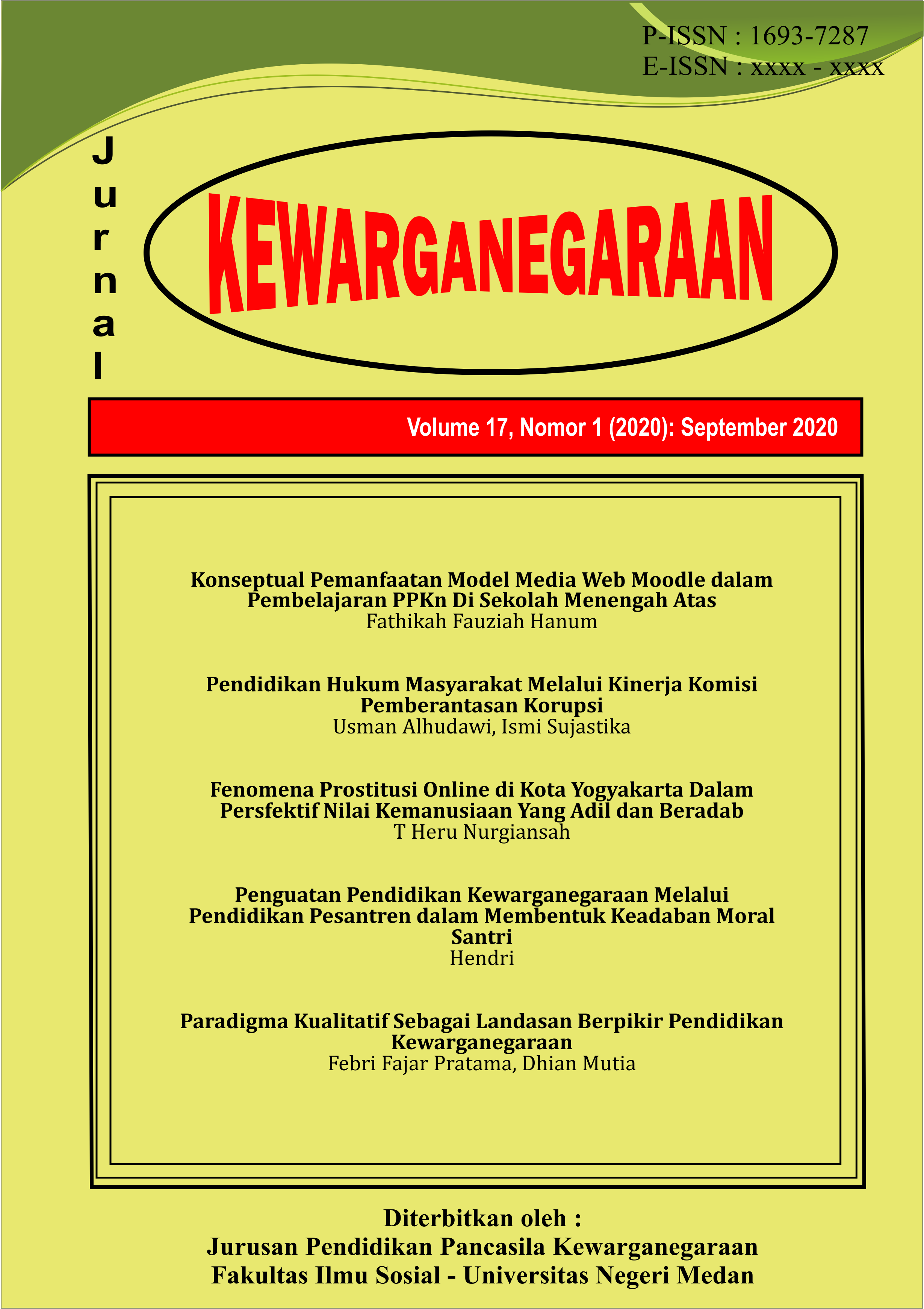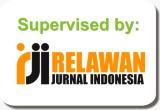Konseptual Pemanfaatan Model Media Web Moodle dalam Pembelajaran PPKn di Sekolah Menengah Atas
DOI:
https://doi.org/10.24114/jk.v17i1.18700Keywords:
blended learning, web media, multimediaAbstract
This paper aims to describe the form of Moodle web media for Civic Education learning in Senior High School and how it is used in learning. Based on previous research that some students need web-based learning media, it is necessary to determine the concept of the type of media and how the steps. This research is descriptive and this is done by literature review. The results of the study show that the concept of the model of media used in web-based media development is digital-based multimedia because the characteristics of Moodle's web media in it contain a combination of various media and connected with the internet network. Whereas the learning model is blended learning in the form of face-to-face mixed learning and e-learning in time and proportion of the use of mixed learning is flexible and online learning is used as a compliment.--------------Tulisan ini bertujuan menggambarkan bentuk media web Moodle untuk pembelajaran PPKn di Sekolah Menengan Atas serta bagaimana pemanfaatannya dalam pembelajaran. Berdasarkan penelitian sebelumnya bahwa beberapa siswa membutuhkan media pembelajaran berbasis web, maka perlu menentukan konsep jenis model media dan bagaimana langkah-langkahnya. Penelitian ini adalah penelitian deskriptif dan hal ini dilakukan dengan kajian pustaka. Hasil kajian menunjukkan bahwa konsep model media yang digunakan dalam pengembangan media berbasis web adalah multimedia berbasis digital karena karakteristik dari media web moodle ini di dalamnya berisi kombinasi dari berbagai media dan terhubng dengan jaringan internet. Sedangkan model pembelajarannya adalah blended learning yang berupa pembelajaran campuran tatap muka dan e-learning namu waktu dan porposi penggunaan pembelajaran campuran adalah bersifat fleksibel serta pembelajaran online digunakan sebagai pelengkap.References
Abdulhak, I., & Darmawan, D. (2015). Teknologi Pendidikan. Bandung: Rosdakarya.
Alty, J. L., Al-Sharrah, A., & Beacham, N. (2006). When Humans form Media and Media form Humans: An Experimental Study Examining the Effects Rifferent Digital Media Mave on the Learning Outcomes of Students Who Have Different Learning Styles. Interacting with Computers, 18(5), 891“909. https://doi.org/10.1016/j.intcom.2006.04.002
Briggs, L. J., & Wager, W. W. (1981). Handbook of Procedures for the Design of Instruction. New Jersey: Educational Technology.
Cooke, S. (2017). Social teaching: Student Perspectives on the Inclusion of Social Media in Higher Education. Education and Information Technologies, 22(1), 255“269. https://doi.org/10.1007/s10639-015-9444-y
Danial, E. & Djuherman. (2017). Pengembangan Kurikulum Pendidikan Kewarganegaraan. Harapan Cerdas Publisher.
Hanum, F. F., Komalasari, K., & Masyitoh, I. S. (2018, November 1). The Need of Instructional Media Online for Senior High School Students in Civic Education. In Annual Civic Education Conference (ACEC 2018). Atlantis Press. https://doi.org/10.2991/acec-18.2018.37
Komalasari, K., & Saripudin, D. (2017a). Pendidikan Karakter: Konsep dan Aplikasi Living Values Education. Bandung: Refika Aditama.
Komalasari, K., & Saripudin, D. (2017b). Value-Based Interactive Multimedia Development through Integrated Practice for the Formation of Students' Character. Turkish Online Journal of Educational Technology-TOJET, 16(4), 179-186.
Kustandi, C., & Sutjipto, B. (2011). Media Pembelajaran: Manual dan Digital. Bogor: Ghalia Indonesia.
Reiser, R. A. (2001). A History of Instructional Design and Technology: Part I: A History of Instructional Media. Educational Technology Research and Development, Vol. 49, 53“64. https://doi.org/10.1007/BF02504506
Sadiman, A. S., Rahardjo, R., Haryono, A., & Harjito. (2008). Media Pendidikan: Pengertian Pengembangan dan Pemanfaatannya. Jakarta: Raja Grafindo Persada.
Schrum, L. (Ed). (2013). Teknologi Pendidikan bagi Para Pemimpin Sekolah. Jakarta: Indeks.
Smaldino, S. E., Lawther, D. L., & Russell, J. D. (2011). Instructional Technology and Media for Learning: Teknologi Pembelajaran dan Media untuk Belajar (B. S. Triwibowo, Ed.; A. Rahman, Penerj.). Jakarta: Kencana.
Sugiyono. (2012). Metode Penelitian Kuantitatif, Kualitatif dan R & D. Bandung: Alfabeta.
Syarif, I. (2012). Pengaruh Model Blended Learning Terhadap Motivasi dan Prestasi Belajar Siswa SMK. Jurnal Pendidikan Vokasi, 2(2), 234“249. https://doi.org/10.21831/jpv.v2i2.1034
Downloads
Published
Issue
Section
License
Copyright (c) 2020 Fathikah Fauziah Hanum

This work is licensed under a Creative Commons Attribution-ShareAlike 4.0 International License.
Authors published with the Jurnal Kewarganegaraan agree to the following terms:
- Authors retain copyright and grant the journal the right of first publication with the work simultaneously licensed under a Creative Commons Attribution License (CC BY-SA 4.0) that allows others to share the work with an acknowledgment of the work's authorship and initial publication in this journal.
- Authors are able to enter into separate, additional contractual arrangements for the non-exclusive distribution of the journal's published version of the work (e.g., post it to an institutional repository or publish it in a book), with an acknowledgment of its initial publication in this journal.
- Authors are permitted and encouraged to post their work online (e.g., in institutional repositories or on their website) prior to and during the submission process, as it can lead to productive exchanges, as well as earlier and greater citation of published work. (See The Effect of Open Access)
Licence

Jurnal Kewarganegaraan is licensed under a Creative Commons Attribution-ShareAlike 4.0 International License.








